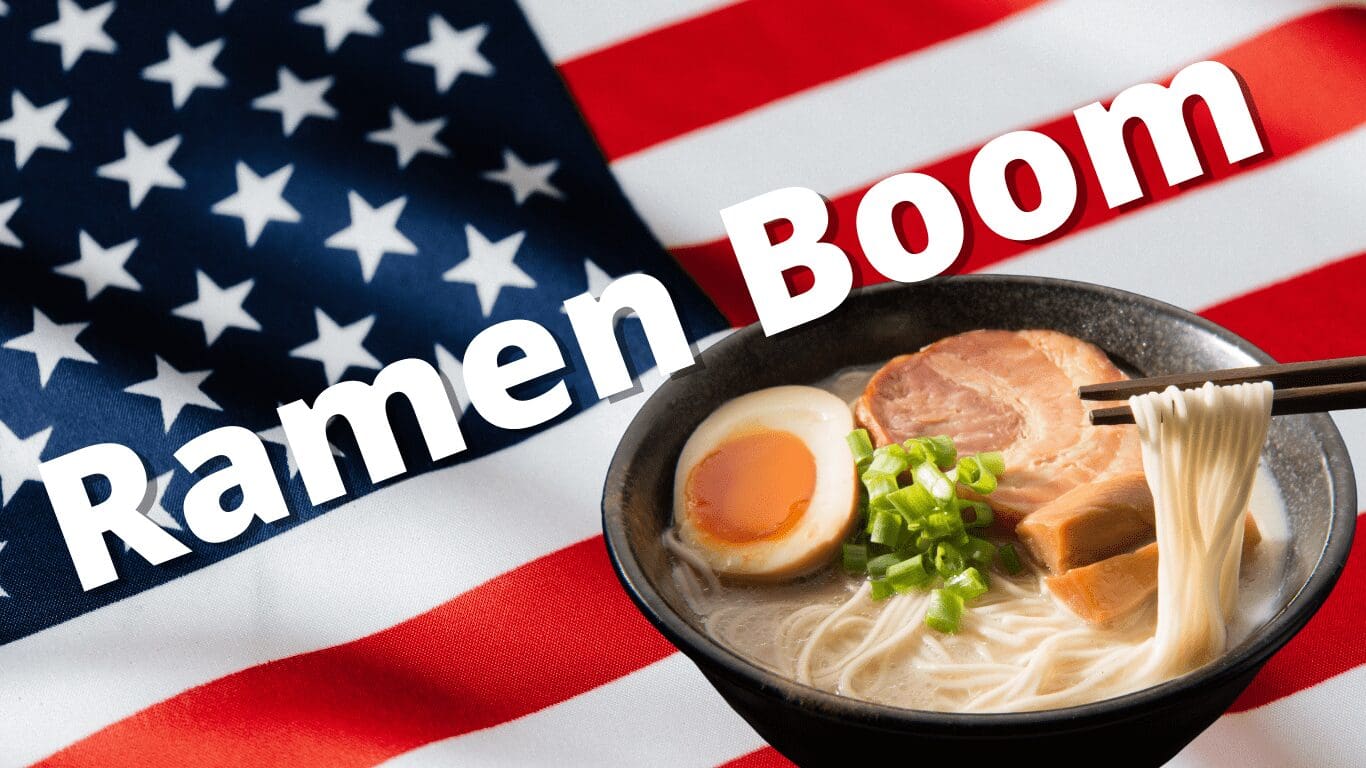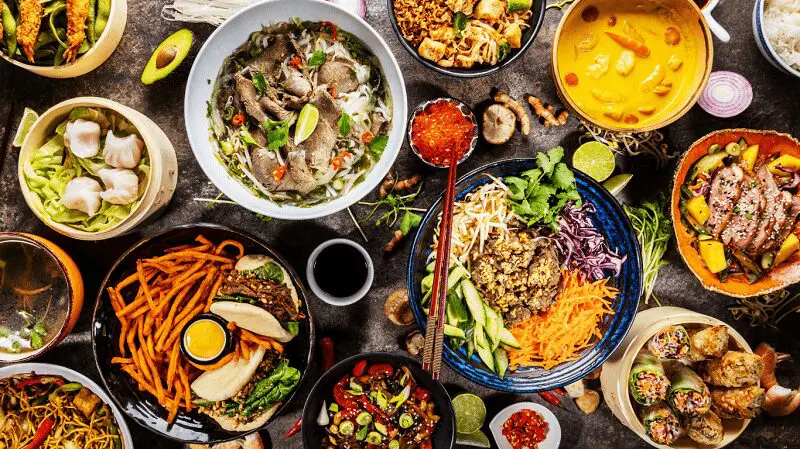Let’s celebrate National Noodle Day 2023 by sharing the history and exploring the various types of noodles!
Published: Oct 5, 2022/ Last Updated:May 2, 2024
- 9 min read
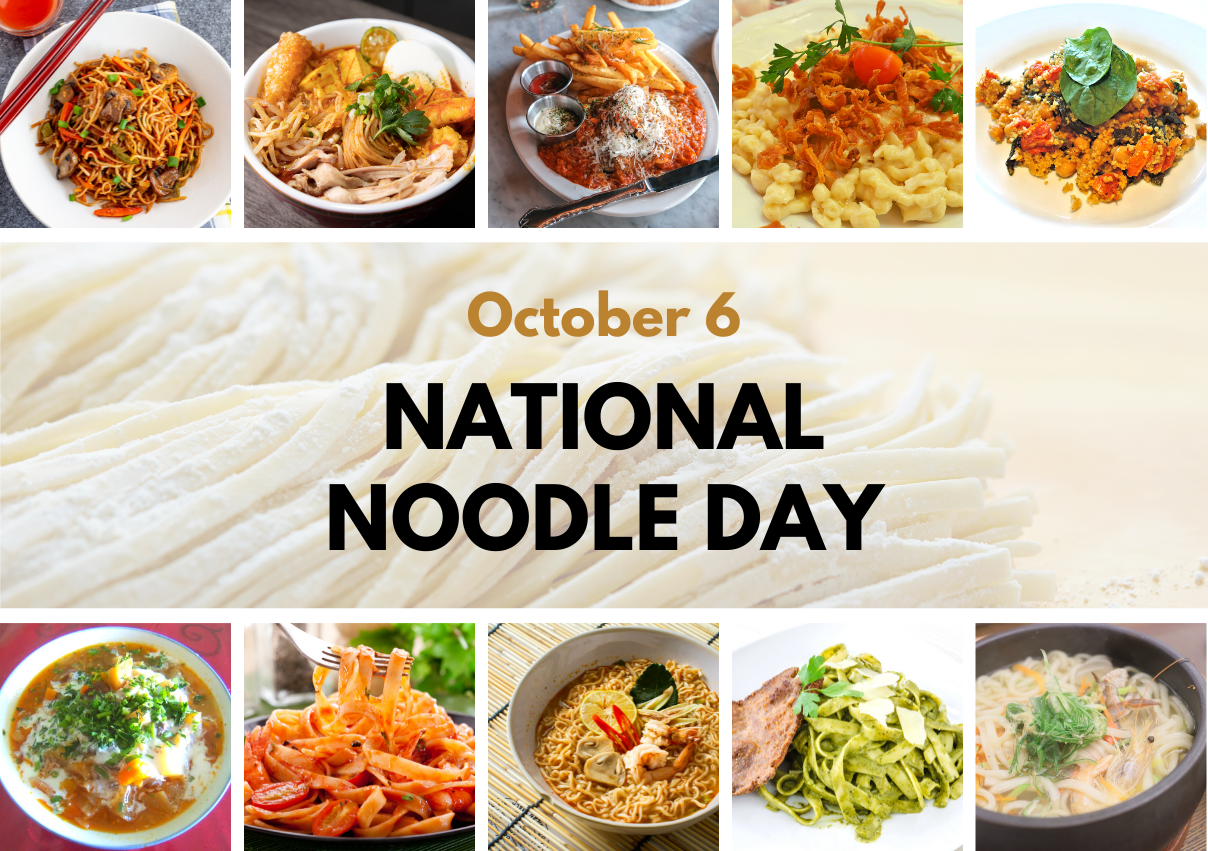
Hello to ramen fans across the country! “National Noodle Day” is October 6th. It is a day to celebrate the birth of the noodle, a staple in the human diet for more than 4,000 years. This special day was first recognized in the U.S., but noodle lovers from all over the world can participate! You can take part by cooking your favorite noodle dish or trying a new noodle recipe. If you are not confident in your cooking abilities, you can enjoy a noodle dish at a local restaurant or even eat instant noodles if you are short on time. Let’s celebrate National Noodle Day 2023 with noodle lovers all over the world by eating noodle-related food.
In celebration of the birth of noodles, we want to use this article to uncover the history of noodles, starting with a look at two of the world’s most famous noodles: Chinese noodles and pasta. Also, since National Noodle Day is not limited to the United States and is a global event, we will also pay homage to some popular regional noodle dishes from around the world. I think these topics will make for great conversation with family and friends over a bowl (or dish) of your favorite noodle on National Noodle Day, so please stay with me until the end.
- Index
- What Are “Noodles” Anyway?
- Tracing the Roots of Noodles (China)
- Tracing the Roots of Noodles (Italy)
- Noodles That Landed in the U.S.
- Noodle Dishes of the World
- Conclusion
■What Are “Noodles” Anyway?
There isn’t one standard definition for noodles, so for this article, we refer to the words of the Japanese cultural anthropologist, Naomichi Ishige, a leading researcher on noodle culture, to provide some guidance.
“Noodles are food products made from grain, legume, or other flour and processed into a linear shape. As a rule, they are boiled or stewed and eaten as a main ingredient in staple or semi-staple dishes.”
■Tracing the Roots of Noodles (China)
Did noodles originate in China or in Italy? It is a question that has been debated amongst noodle enthusiasts for a long time. Recent research, however, has led many to believe that noodles first appeared in China, as its name is first referenced in a Chinese document from the 2nd century. The shuǐ yǐn bǐng (水引饼) that appeared in a book called Qimin Yaoshu (齊民要術), established around 530-550 CE, is thought to be the ancestor of the noodle.
Note that shuǐ yǐn bǐng was made in the form of hand-stretched noodles that were elongated in shape. “Cut noodles,” processed by cutting the stretched dough with a blade, appeared during the Tang dynasty, while dried noodles were confirmed during the Yuan dynasty.
■Tracing the Roots of Noodles (Italy)
Next, let’s look at the roots of Italian noodles. When we think of noodles in Italy, we think of “pasta,” but it is important to recognize that pasta includes any flour-based paste, regardless of its shape. In this article, we will focus on the shape of the noodle and investigate when the long, thin dried noodles that we generally associate with the word “pasta” came into being.
In the 1000s, a food resembling today’s fresh pasta appeared, made by kneading flour with water, forming the dough, boiling it, and eating it (the word “pasta” is derived from “impastare,” which means to knead). This early form of pasta is what is now known as macaroni and gnocchi, though neither have the conventional elongated shape of pasta. For that, we will explore the term itriyya, which appeared in Sicily around the same time as macaroni and gnocchi and is considered the root of spaghetti in Italy.
Itriyya is not a common word, so let’s refer to some historical literature for context. First, the medieval Arab geographer, Muhammad al-Idrisi, mentions in a book compiled in 1154 that in Trabia, in northern Sicily, itriyya is made in large quantities and exported to other places. It is also mentioned in the writings of the Islamic philosopher Avicenna (980-1038) that “itriyya is in the form of a leather string.” Additionally, it is reported that in the 9th century, boiled semolina dough was dried in bunches and called itriyya.
Together, these references suggest that itriyya, which originated in the Arab world, is similar to today’s pasta in terms of shape, ingredients, and production method. Later, it is thought that itriyya was introduced to Sicily, which was conquered by the Arabs around the 9th century, and that this may be the origin of today’s pasta. When researching for this article, I was surprised to learn that pasta has its roots in the Middle East.
■Noodles That Landed in the U.S.
Finally, I want to discuss how noodle culture spread in the United States. Its introduction was by Thomas Jefferson, the third president of the United States, who reportedly brought back a macaroni-making machine with him when he returned from France in 1789. In 1848, Frenchman Antoine Zerega established the first U.S. pasta factory in Brooklyn, New York. Later, during the 19th and early 20th centuries, immigration increased, primarily from southern Italy. These Italian immigrants brought Italian cuisine from their homeland to the New World. Over time, these traditional dishes evolved to include local ingredients and cater to the taste preferences of the American people. This inevitably led to the creation of unique Italian American pasta dishes such as Spaghetti and Meatballs, Alfredo Pasta, and Macaroni and Cheese.
The arrival of Chinese noodles in the U.S. can be traced back to chow mein, which was brought over from China by immigrants from Guangdong Province during the Gold Rush in 1849. With that in mind, it seems that pasta arrived in the U.S. somewhat earlier than Chinese noodles.
Nowadays, noodle dishes from all over the world, such as Pho from Vietnam, Pad Thai from Thailand, and Japchae from Korea, can be easily enjoyed throughout the U.S. As for Japanese ramen, the instant noodle “Cup Noodle” first arrived in the United States in 1973. And in the 21st century, David Chang’s “Momofuku Noodle Bar” triggered a ramen boom, promoting ramen as a popular item on menus. Today, high-quality fresh ramen noodles are also relatively easy to find in supermarkets and online stores. Thus, in the United States, noodles have become as important to the American diet as they are in China and Italy.

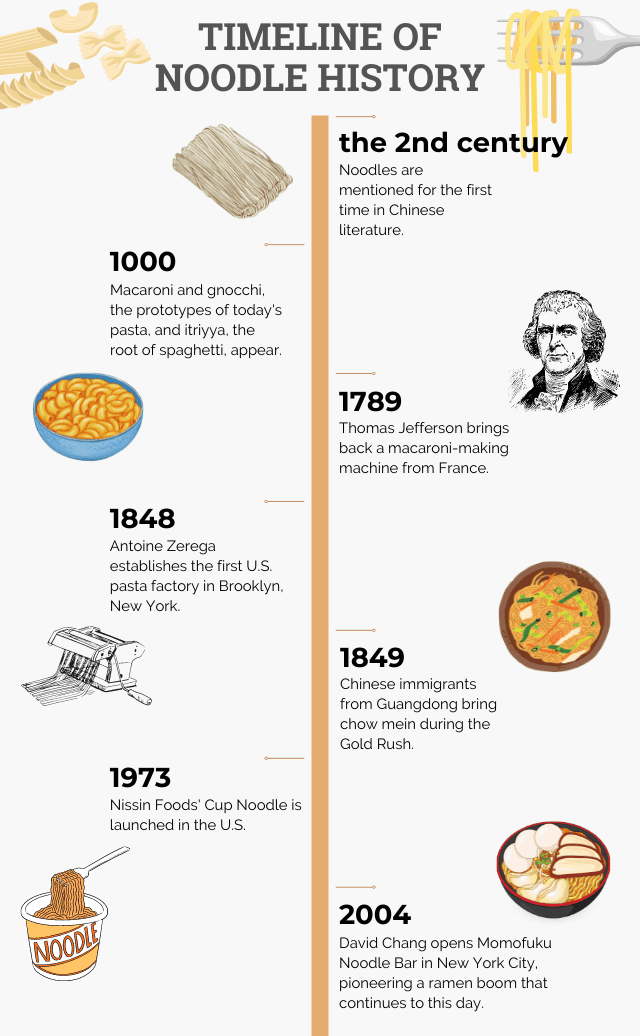
*For the history of ramen, please refer to this article.
*For the history of yakisoba, please refer to this article.
■Noodle Dishes of the World
So far, we have given an overview of the history of noodles and how they made their way to the United States. Next, as evidence that National Noodle Day is a universal celebration, we would like to introduce one noodle dish from each region of the world.
・Europe (Germany): Spätzle
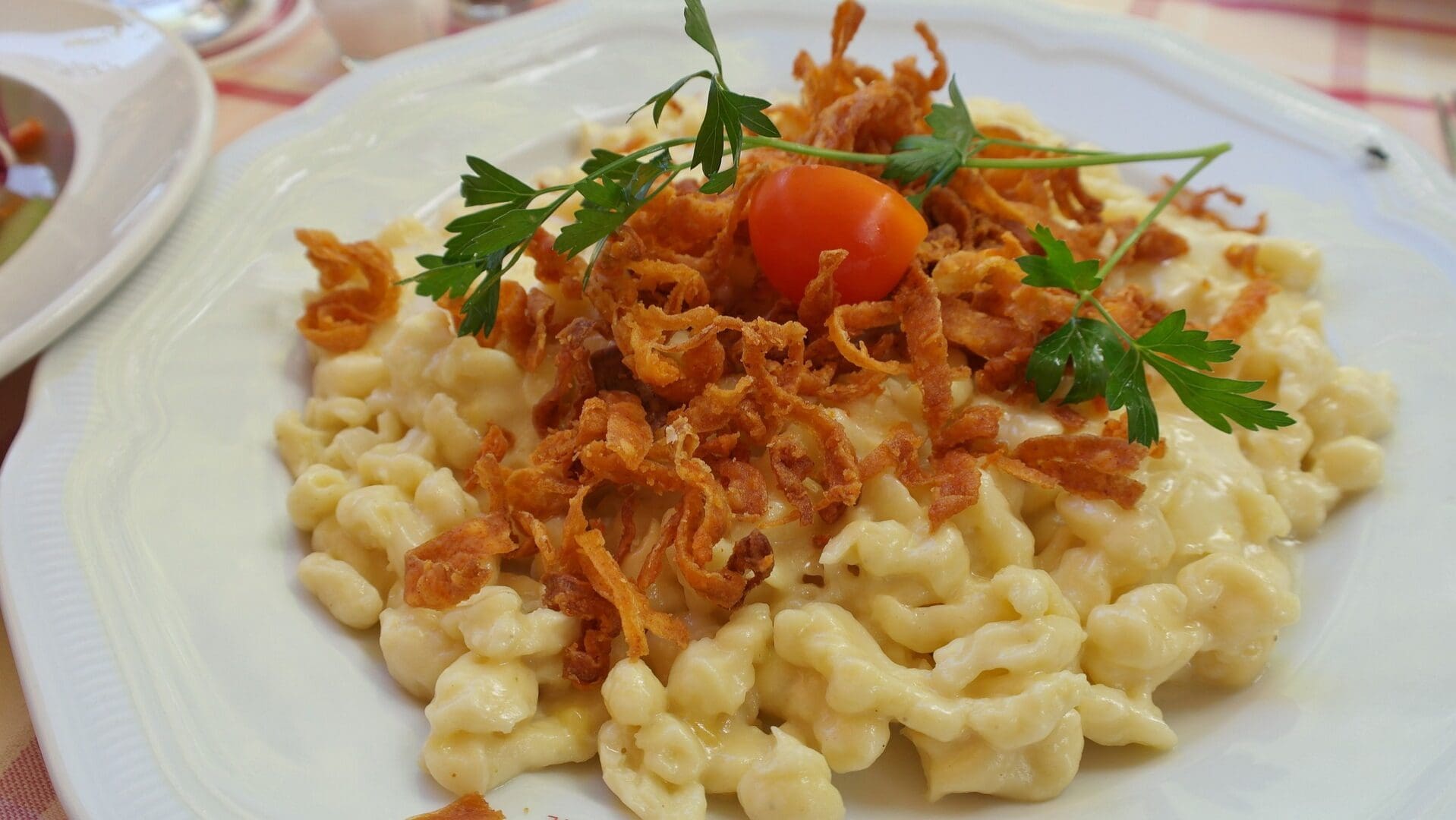
First, I would like to introduce Spätzle from Germany. Why Germany? The word “noodle” is derived from the German word Nudel, so it is only appropriate to introduce spätzle as the first dish in our list of noodles from around the world.
Spätzle is a specialty from Swabia, southern part of Germany, and means “little sparrow” in German. The noodle dough is made loosely with flour, salt, and eggs. The dough is pressed through a colander that sits above the hot water to form its unique shape. There are a variety of spätzle dishes, but the most common is Käsespätzle. This dish is made by mixing grated cheese and fried onions into the spätzle.
・Africa: Couscous
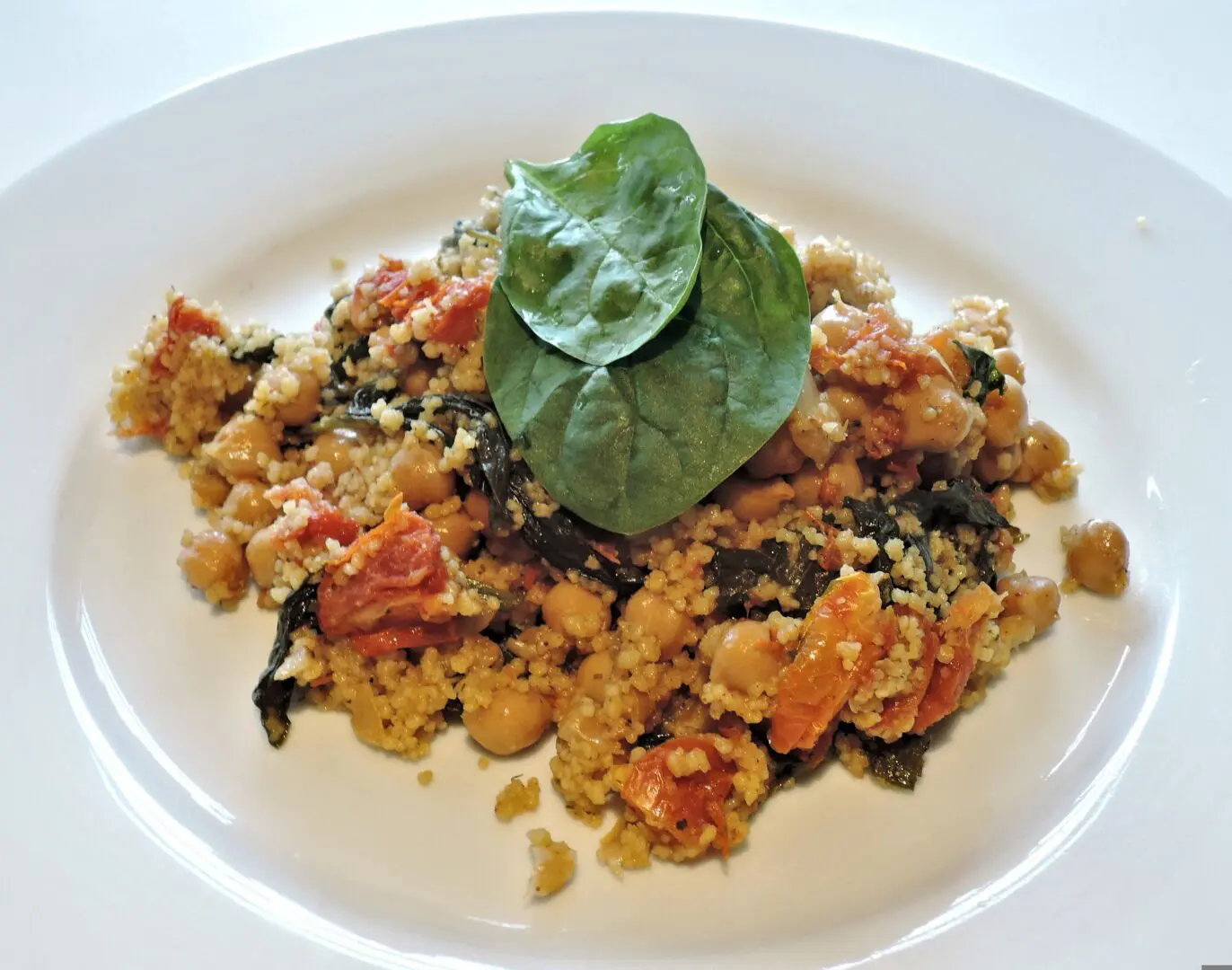
Couscous is made from durum wheat that has been ground into flour, moistened, and then granulated to about 1 mm in diameter before being steamed and dried. Since both couscous and dried pasta are made from durum wheat, couscous is sometimes called the smallest dried pasta. At the beginning of this article, I defined noodles as “food products made from grain, legume, or other flour and processed into a linear shape,” but couscous does not fall under this umbrella. However, I really wanted to feature it as a representative pasta of Africa, so I hope you will forgive me. Couscous is a staple food of the Maghreb region of Tunisia and Morocco, located in the northwestern part of Africa, and has been served for thousands of years as a traditional dish of the indigenous Berbers. It is also popular in France and Italy. The way in which the dish is served varies from region to region. For example, in Tunisia, tomato-based soups are the norm, with spices added according to taste. In Morocco, on the other hand, saffron-based soups are the norm, and spices such as cumin and ginger are mixed in.
・North America (U.S.A.): Spaghetti and meatballs
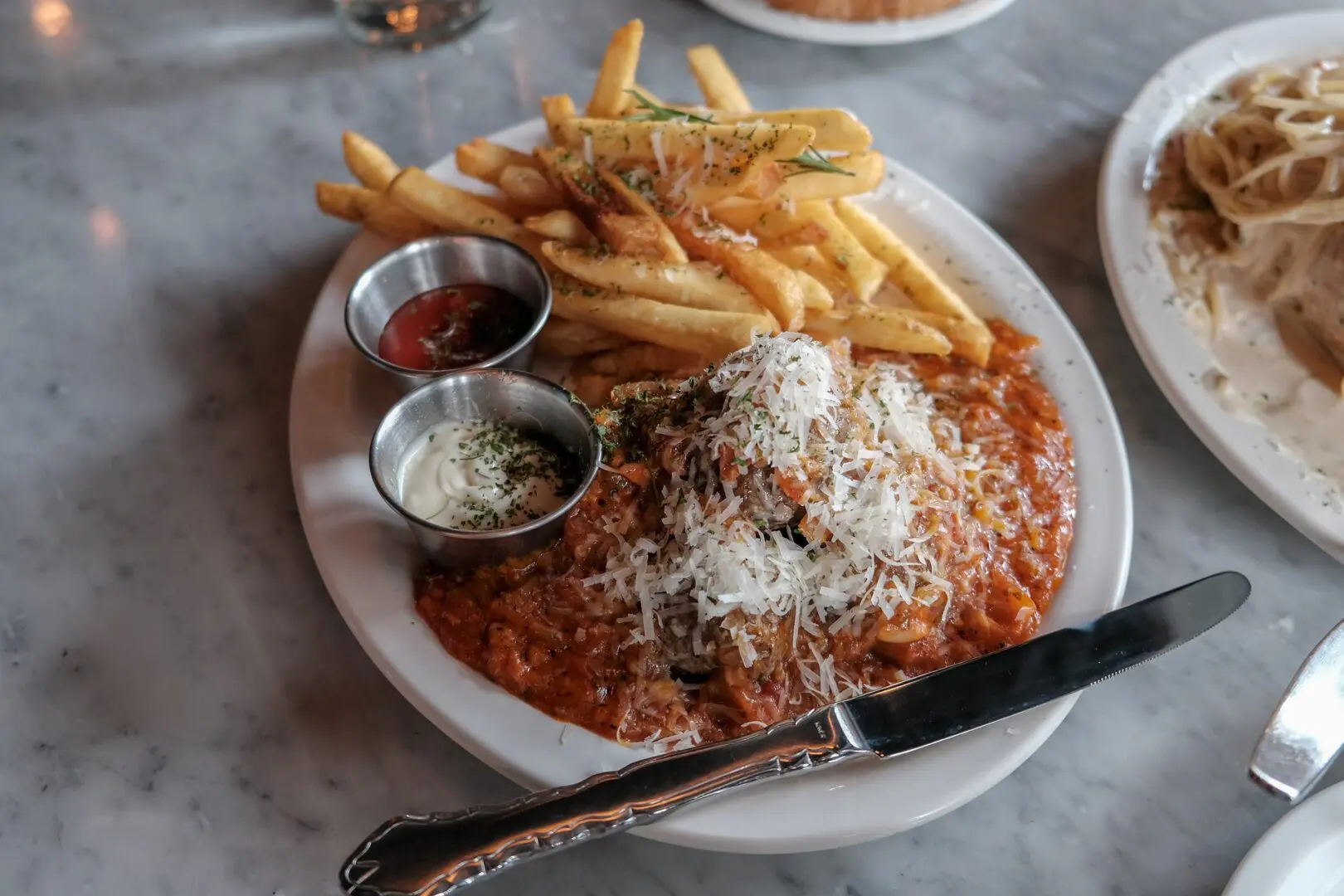
The spaghetti and meatballs dish was invented by Italian immigrants in New York City. There are records of a recipe for spaghetti and meatballs published as early as 1888. In New York at that time, many immigrants from Campania, including Naples, ran grocery stores that allowed for tomato paste, oregano, and garlic to be readily available to use for this dish. Though this pasta dish already existed in Italy, the meatballs used in the American version are larger than those used in the Italian version.
・South America (Peru): Tallarin Verde
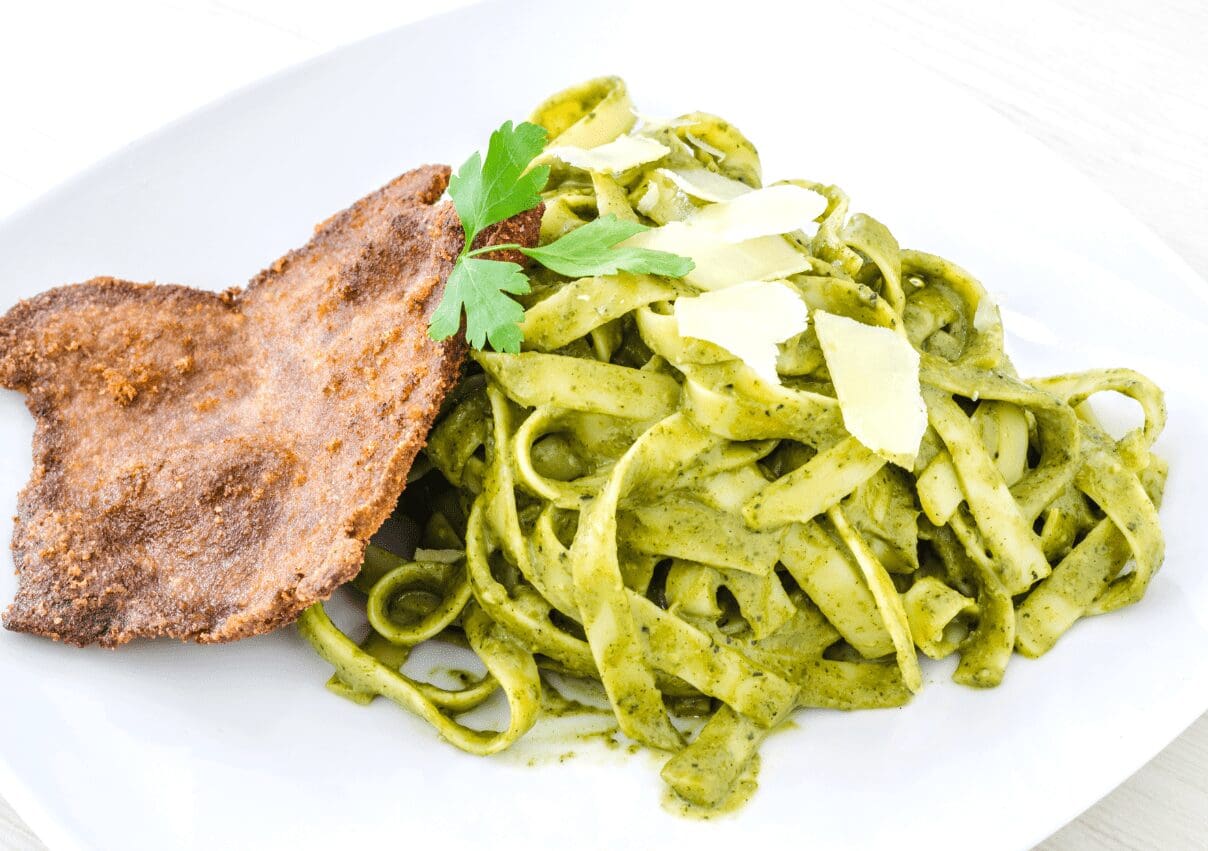
Tallarin Verde means “green pasta” in Spanish. Peru has had an influx of Italian immigrants since around the 19th century, and its food culture was influenced by Italian cuisine. Tallarin verde is one such dish. It is like pasta alla genovese, but the taste of tallarin verde differs slightly due to the use of spinach and basil. Its characteristic flavor is due to the use of milk and cheese. Bistec (meaning “beefsteak”) is the favorable accompaniment.
・East Asia (South Korea): Kalguksu
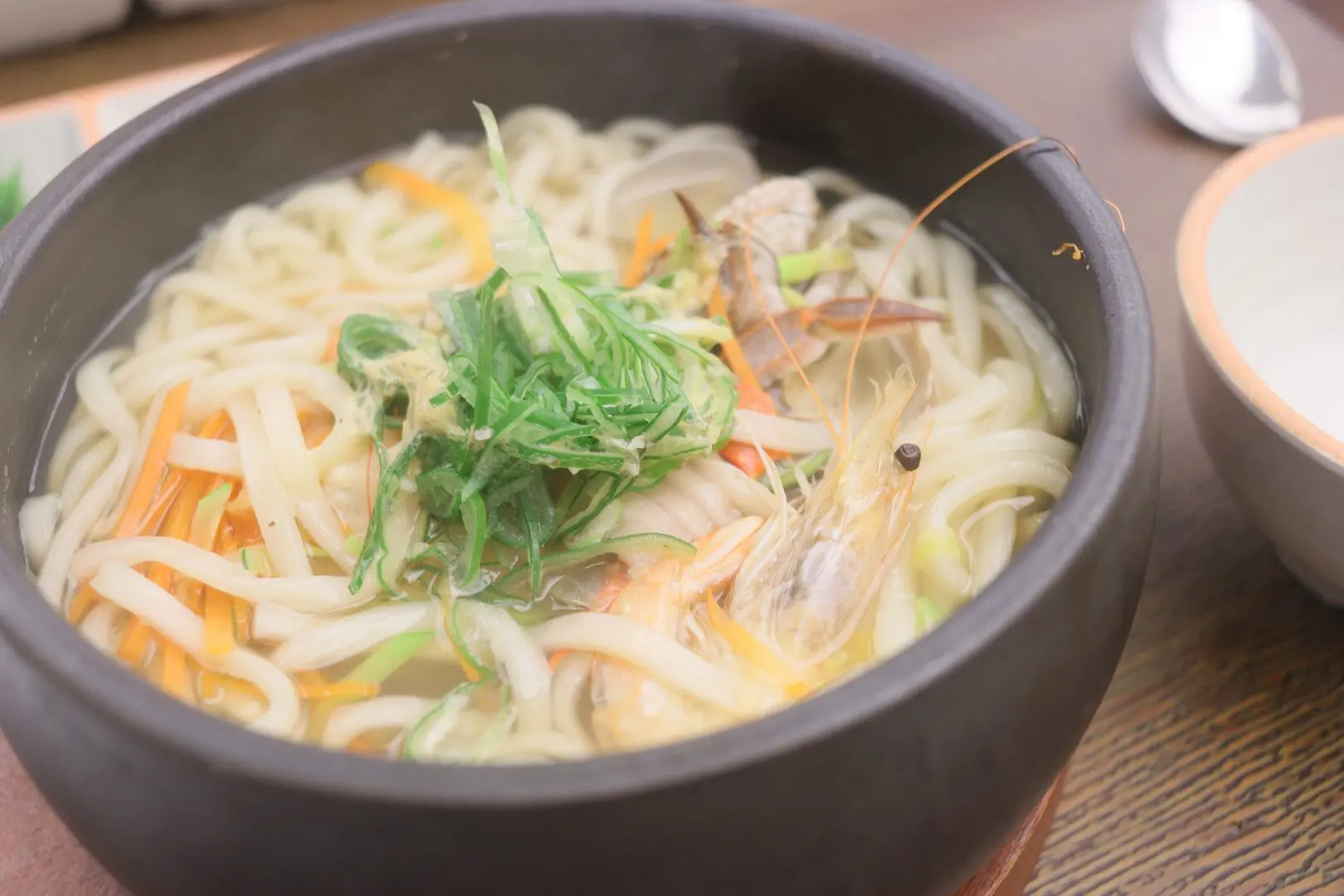
Kalguksu has been referenced in Korean cookbooks as early as 1670 and is a cut noodle dish made of wheat flour. To make kalguksu, first add eggs, salt, and sesame oil to flour; knead it with water; and roll it out with a rolling pin. The dough is then cut with a knife to make the noodle. In Korean, kal (칼) means “knife” and guksu (국수) means “noodles,” so kalguksu means “noodles cut with a knife.” The broth is generally made from sardines, shellfish, kelp, chicken, beef, and other ingredients. In addition to chicken, shredded nori, zucchini, and shiitake mushrooms are often used as garnish. Nabak kimchi (water kimchi) or kimchi is also served as an accompaniment. The seasonings vary widely, from non-spicy chicken and seafood-based flavors to spicy flavors using gochujang.
・Southeast Asia: Laksa
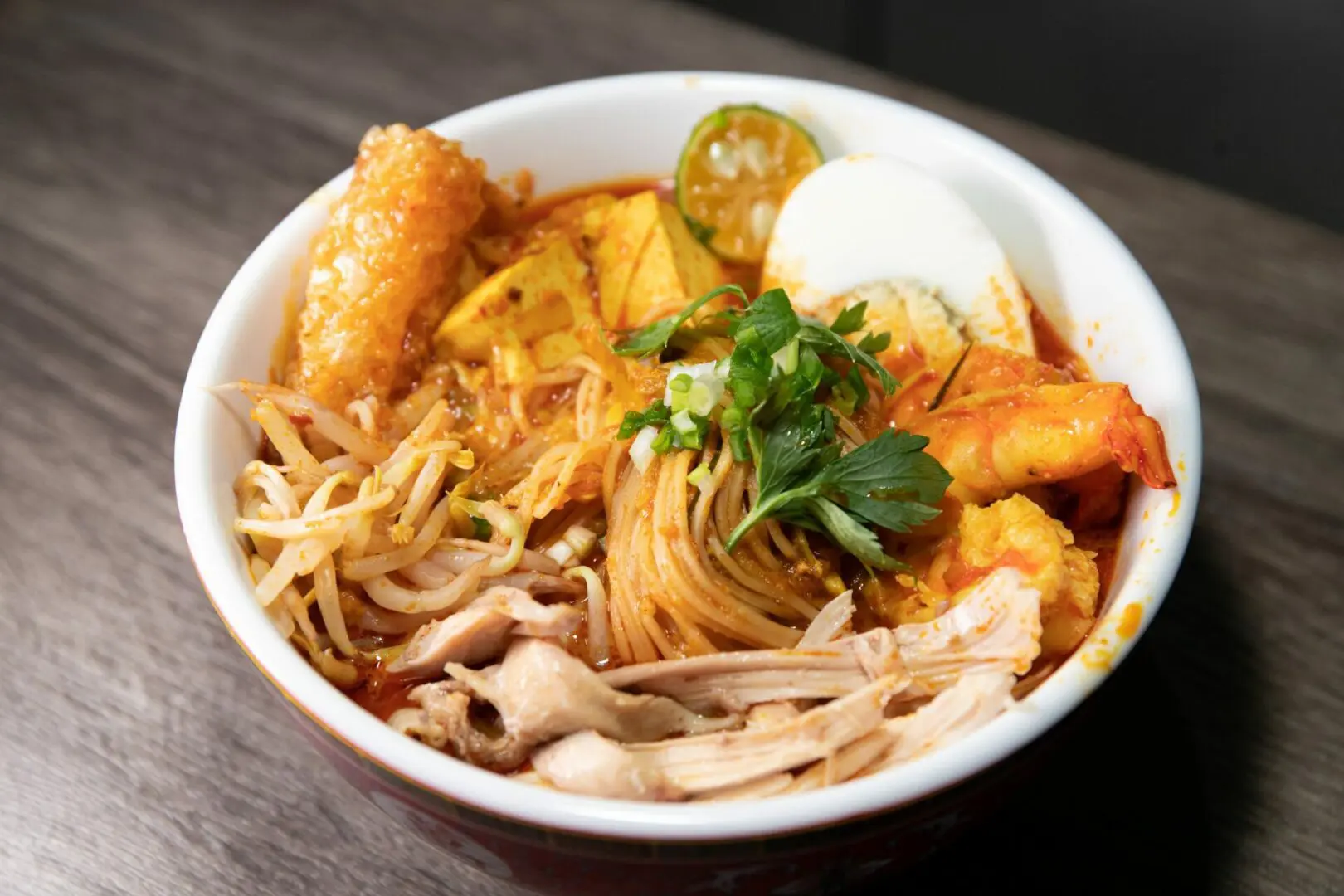
Laksa is a soup noodle dish commonly eaten in Southeast Asian countries such as Malaysia, Indonesia, and Singapore. It is a representative food of Baba–Nyonya cuisine, meaning that it is of Chinese descent. Laksa is believed to have originated from noodle dishes brought by Chinese immigrants to Southeast Asia around the 15th century. With the combination of local spices and cooking methods, the dish evolved into the laksa of today. Thick rice noodles are more commonly used, but it is not unusual to find laksa with thin noodles. There are many variations of laksa noodles and flavors depending on the region, but they can be roughly divided into two types: curry laksa, which is shrimp-based and coconut curry-flavored, and assam laksa (Sarawak laksa), which is sour and fish-based. Amazingly enough, assam laksa was ranked seventh on CNN’s list of the world’s 50 best foods.
・Central Asia: Laghman
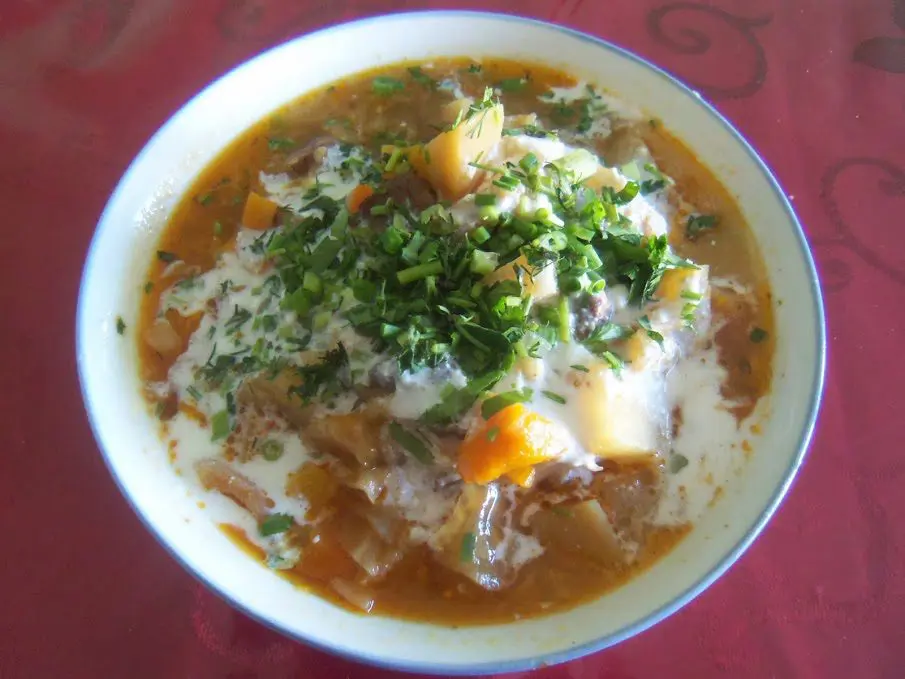
Laghman is a soup noodle dish commonly eaten throughout Central Asia, including Xinjiang Uygur, Uzbekistan, Tajikistan, Kazakhstan, Kyrgyzstan, and Turkmenistan. It uses medium-thin, hand-pulled noodles made of wheat flour. It is unique in that the noodles are made immediately before eating. The soup is based with lamb or beef and tomatoes and is simmered with plenty of seasonal vegetables such as red peppers, onions, carrots, and celery. It is finished with herbs such as dill and cilantro. Recipes vary from region to region, but there are three main types: soup noodle type, no-soup noodle type, and stir-fried noodle type. The name laghman is thought to be derived from the Chinese word lā miàn (拉麺).
■Conclusion
In writing this article, I was first struck by the various ingredients (wheat flour, rice flour etc.) and production methods used to make noodles. I was also intrigued by the many types of noodle dishes from around the world. I could not help but be reminded of Momofuku Ando’s words, “Human beings are noodle beings.”
In recent years, information on noodle dishes from different cultures has become more readily available through the Internet and SNSs, resulting in a growing interest in said dishes. Myojo USA hopes to contribute to the expansion of noodle culture by providing high quality fresh noodles to our customers.
We hope that this article will get you excited about National Noodle Day and that you will celebrate with your family and friends over a delicious noodle dish.
National Noodle Day is a day that anyone can participate in by making and enjoying noodle dishes. You can participate with your favorite noodle dishes, or you can take this opportunity to try something new. In that case, we hope that the world’s noodle dishes introduced in today’s article will give you some ideas.
Thank you again for staying with us until the end of this issue. We plan to have more interesting noodle-related information for you in the next issue, so look forward to it!
Reference links:
麺 – Wikipedia
パスタ – Wikipedia
マカロニ – Wikipedia
The Nibble: History Of Pasta
NATIONAL NOODLE DAY – October 6, 2022 – National Today
写真アーカイブス | 食文化を知る・学ぶ | 石毛直道食文化アーカイブス | 味の素 食の文化センター
麺の起源、系譜|世界の麺料理
パスタができるまで|パスタを知る|日本パスタ協会
Noodle Timeline – Confucius was a Foodie
A brief history of noodles and all their kinds | News, Sports, Jobs – Daily Press
The History of Noodles: How a Simple Food Became a Worldwide Staple
FOOD HISTORIES: NOODLES- WESTERN HISTORY — DEETS ON EATS
History of Pasta | Share the Pasta
The Culture and History of Noodles
History of Pasta and Its Influence in the U.S. – June Sohn – CHN/ITAL370W Noodle Narratives- Summer 2019
Who invented the noodle, Italy or China? : SBS Food
Noodle in Northern Europe, The | Encyclopedia.com
Noodle in Asia, The | Encyclopedia.com
パスタの歴史をひも解いてみる
リシュタ | ナポリタンはいつからあるの?~World cultural history’s Blog
イタリアワインとパスタを見つめながらの取り留めない話#10|勝鬨美樹|note
世界最古のパスタ!(パスタの歴史Vol.1古代編) | 中野から本場イタリアの食文化を発信するブログ
デュラムセモリナとはどんな小麦粉?特徴をご紹介 | DELISH KITCHEN
Saudi Aramco World : パスタの曲がりくねった西への道
イタリア乾麺(パスタ)の歴史 – 料理王国
シュペッツレ – Wikipedia
シュペッツレって何? Spätzle – じゃーまんぽてと.com
Tallarines Verdes Recipe (South American Green Noodles)
ペルーのパスタはタヤリンベルデ!一風変わったジェノベーゼを実食!|Lovebiotrip 旅する料理研究家 森山さとみ
Tallarines Verdes タジャリネス・ベルデス | keikoharada.com
Spaghetti and meatballs – Wikipedia
おいしいアジアの麺料理。エスニック・ヌードル《おすすめ》14品♪
シルクロードの麺料理、「ラグマン」とは | 丸ごと小泉武夫 食マガジン
世界最小のパスタ料理、クスクスとは? [グルメ・各国料理(海外)] All About
クスクスの歴史 – 謎が多い極小パスタの起源とは – 歴ログ -世界史専門ブログ-
